London College of Communication
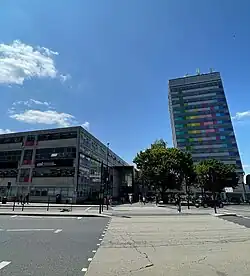 | |
| Established | 1894 |
|---|---|
Parent institution | University of the Arts London |
| Provost | Professor Kene Igweonu |
| Location | , United Kingdom 51°29′40.85″N 0°6′6.77″W / 51.4946806°N 0.1018806°W |
| Campus | Urban: Elephant & Castle |
| Website | arts |
 | |
The London College of Communication is a constituent college of the University of the Arts London. Its origins are in education for the printing and retail industries; it now specialises in media-related subjects including advertising, animation, film, graphic design, photography and sound arts.
It has approximately 5,000 students, and offers about sixty courses at undergraduate and postgraduate level. It is organised in three schools: media, design and screen; all are housed in a single building in Elephant and Castle. It received its present name in 2004; it was previously the London School of Printing and Graphic Arts, then the London College of Printing, and briefly the London College of Printing and Distributive Trades.
The top leadership role in the College was previously known as the Pro Vice-Chancellor and Head of College; in 2025, this role was changed to the Provost of London College of Communication instead.
The current Provost is Professor Kene Igweonu, who has been the Head of College since July 2022.[1]
History
The school was formed in 1990 by the merger of the College for Distributive Trades with the London College of Printing.
The London College of Printing descended from the St Bride's Foundation Institute Printing School, which was established in November 1894 under the City of London Parochial Charities Act of 1883. The Guild and Technical School opened in the Old Daily Mirror building in Clerkenwell in the same year, but moved a year later to Bolt Court, and became the Bolt Court Technical School; it was later renamed the London County Council School of Photoengraving and Lithography.
Annual portfolios of student work were assembled during the years that the printing school was administered by St Bride Foundation. These, and other early documentation, form part of the permanent collections at St Bride Printing Library.
St Bride's came under the control of the London County Council in 1922 and was renamed the London School of Printing and Kindred Trades; in 1949 it was merged with the LCC School of Photoengraving and Lithography, forming the London School of Printing and Graphic Arts. In 1960 this was renamed the London College of Printing. The printing department of the North Western Polytechnic was merged into it in 1969. The London College of Printing became part of the London Institute in 1986.[2]
The Westminster Day Continuation School opened in 1921, and was later renamed the College for Distributive Trades. It too became part of the London Institute in 1986. In 1990 it merged with the London College of Printing to form the London College of Printing and Distributive Trades, which in 1996 was renamed the London College of Communication.[2]
In 2003 the London Institute received Privy Council approval for university status, and in 2004 was renamed University of the Arts London.[3]
Building and location
Since 1962, London College of Communication has been located in the centre of Elephant and Castle. The building expanded in 1973 to include the Design and Management School (now know as the 'Design School’) and in 2003 to accommodate the moving of the School of Media from Back Hill.[4]
The signage in the building was designed by alumni Domenic Lippa and his colleagues at Pentagram. The wayfinding design was a Gold Winner at the 2016 London Design Awards, as well as winning a Wood Pencil for Graphic Design/Wayfinding & Environmental Graphics at the 2016 D&AD Awards.[5][6][7]
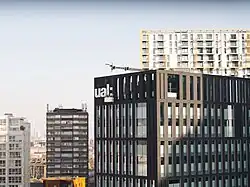
A new building is currently underway, with the current building due to be closed in 2027 and the new campus opening its doors in September of the same year. Approved by Southwark Council as part of urban development in Elephant & Castle, the building will be part of 3 lots replacing the 1960s shopping mall. The construction is built out by Multiplex, with the new university’s 45000 sqm fit-out strategy designed by architecture firm Allies and Morrison.[8][9]
The first two floors of the new building will be open to the public, with a community space for events and student showcases, and will sit alongside new shops, restaurants, rental homes, and the new Elephant & Castle London Underground station entrance. The current building will be redeveloped into almost 500 new homes, retail and leisure, and a cultural centre.[10][11]
Education
London College of Communication is structured into three schools: Design, Media and Screen. As well as offering undergraduate, postgraduate and research courses, the College also offers a Diploma in Professional Studies (DPS).[12] The MPhil and PhD courses at London College of Communication are a part of the University of the Arts London’s Doctoral School, based in High Holborn.[13]
Design School
The Design School originated from the Department of Design, assembled by William Stobbs during the College’s time as the London School of Printing and Graphic Arts. This department established the first ever undergraduate course in graphic design to exist in Britain.
At the time, the primary focus of the College was printing, with a much smaller focus on design. Staff of the original department included renowned poster designer Tom Eckersley, who later became the head of the department for 20 years, and the designer of the London Underground map, Harry Beck. Today, the Design School has grown into one of the largest departments of the current College. Ian Mclaren and Tony Pritchard’s book, Modernist Graphic Design in Britain 1945–1980 (2024), lists the Design School at London College of Communication as one of the top influential schools for the subject of Design.[14]
Undergraduate and postgraduate courses offered by the Design School come under the following streams: Branding and Design Innovation, Graphic Design Communication, Interaction Design and Visual Communication.[15]
The current Dean of Design is Professor Brian Lucid.
Media School
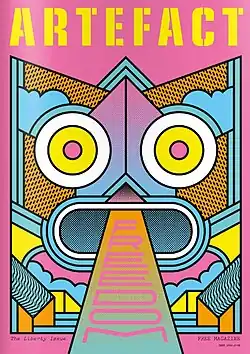
The Media School moved from Back Hill to the current building in 2003. The first UAL research centre was under the Media School: the Photography and the Archive Research Centre (PARC). Founded by Val Williams, Professor of the History and Culture of Photography at the Media School, the research centre ran until 2023.[16][17]
Since 2015, the official UAL student publication, Artefact Magazine, has been produced out of the Media School. Other initiatives at the School include the Refugee Journalism Project, which provides support for displaced journalists.[18][19][20]
Undergraduate and postgraduate courses offered by the Media School come under the following streams: Communications and Media, Journalism and Publishing, and Photography.[21]
The current Dean of Media is Steve Cross.
Screen School
The Screen School is the most recent School at London College of Communication, and includes a combination of both traditional and emerging disciplines in film, television, animation, games design, virtual reality, and sound arts.The School was officially launched in 2017 with a keynote by Lord David Puttnam.[22]
The School is home to Creative Research into Sound Arts Practice (CRiSAP), one of University of the Arts London’s research centres. Established in 2005, CRiSAP supports artistic research into listening, sound, and the politics of audio cultures.[23][24]
Undergraduate and postgraduate courses offered by the Screen School come under the following streams: Film and Television, Moving Image and Digital Arts, and Sound and Music. Recent curriculum developments have included new pathways in virtual production, game design, and immersive storytelling.[25]
The current Interim Dean of Screen is Dr Adam Stanović.[26]
Initiatives and projects
The Talent Works initiative runs at both the London College of Communication and Camberwell College of Arts. The initiative has provided over 200 students with paid work for a variety of creative projects at local charities, social enterprises and community groups in the past 7 years.[27][28]
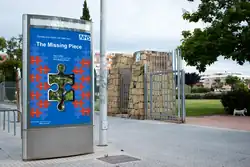
The Digital Learning Champions initiative selects students annually to work with the Digital Learning team at the College. The cohort of 4 Champions works on 4 individual projects, as well as a joint group project.[29]
The Refugee Journalism Project has been run out of the College’s Journalism and Publishing Department since 2016. The scheme provides support for displaced and exiled journalists and has collaborated with global organisations such as BAFTA, Bloomberg, the UNHCR, the Guardian Foundation, the Greater London Authority, and the Refugee Council.[30][31]
Other projects have included partnering with NHS England on two campaigns to mark the 75th anniversary of the NHS, designing limited edition Woodland Trust bottles with Belvoir Farm, collaborating with Southwark Playhouse to produce a magazine, and creating fundraising campaigns for the Cinema Museum.[32][33][34][35][36]
Publications
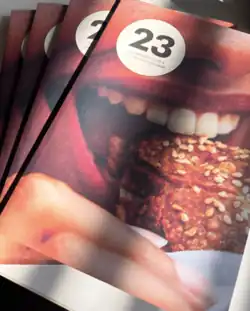
The College has a termly publication, Artefact Magazine, which is produced by students on the BA and MA Journalism Courses, and is the official university-wide student publication. Launched in 2014, the magazine covers topical issues in the fields of politics, art, creativity and social affairs, and is distributed around the entire university. In 2017, the publication was shortlisted for 'Student Magazine of the Year' for the Stack Awards.[37][38]
The secondary publication based at the College is 23 Magazine, which covers cultural issues in Southwark and is localised to the College only. Previous issues included a special on food, which featured and reviewed around 100 local restaurants in the area, and an issue in association with the UNHCR, examining the global food crisis. That issue was described as a ‘groundbreaking initiative’ to improve the public’s understanding of poverty, inequity, corporate capture and the health and environmental cost of our food system by Dr Stuart Gillepsie in his book Food Fight (2025).[39][40]
Archives, artefacts and collections
Several archives are kept at London College of Communication’s campus, including the Zine Collection (which contains over 3000 zines), the Camerawork Archive, the Stanley Kubrick Archive, and more.[41][42] The Archives and Special Collections Centre, which is based at the campus, holds over 45 archives and collections in total.[43]
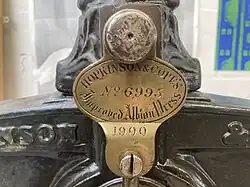
The Stanley Kubrick archive was acquired in 2007, and is stored in a sterile environment in the Archive and Special Collections Centre. The archive receives around 1400–1700 visitors per annum, with the reading room accommodating up to 6 researchers at a time. The Archive has over 800 linear metres of shelving, with 19 categories listed on the online catalogue.[44][45]
Artefacts at the College include a traditional Heidelberg letterpress and several relief printing presses which are the oldest mechanical machines at the university, including an Albion press dating back to 1900.[46]
Student Life
Arts SU, the Students' Union of UAL, has an office based on the campus, as well as a gallery space for student-led exhibitions and events.[47] In addition, the Darkroom Bar, the only student union bar available at UAL, is located at the College.[48] The union's elected Sabbatical officer team of six includes a specific College Officer for London College of Communication, as well as six elected School Reps (2 per School).[49][50]
The Magazine Publishing Society is primarily based at LCC. [51]
Exhibitions and events
Outside of the annual undergraduate and postgraduate degree show exhibitions and Unfolding Narratives (an annual exhibition of works by the postgraduate researchers), past exhibitions have included Design Action for London Design Festival in 2020.[52][53][54]
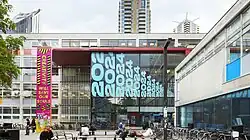
Other displays have included alumni collaboration – one such example was a public plinth designed by alumni and internationally acclaimed artist Annie Nicholson, who works under the name Fandangoe Kid. Created to celebrate 125 years of the College’s contributions to the London art scene, the plinth featured Nicholson’s trademark bright colours and bold typography, and was made in collaboration with both students and the local community. The design included the phrases 'Creativity will save our souls' and 'Open minds change lives', and was in place from March 2020 until June 2025.[55]
Notable events include several publishing conferences hosted by the MA Publishing course, various talks and lectures with a range of speakers, including actor Toby Jones and photographer Diana Markosian, and the British Film Institute’s Charles Chaplin Conference in 2005.[56][57][58] This event was held in collaboration with the University of Southhampton, and coincided with the establishment of the British Film Institute's Charlie Chaplin Research Programme.[59][60]
Cutbacks and closures
LCC had student protests and sit-ins in November 2009, as students expressed anger over proposed course closures and staff redundancies. About 100 students tried to occupy the office of Sandra Kemp, the head of the college at that time, in protest over the lack of supervision for dissertations.[61] Students later occupied a lecture theatre and private security guards tried to remove protesting students. This failed when a member of academic staff questioned their right to touch the students and police were summoned who prevailed upon the protesters to leave the building. Several students faced disciplinary action, including suspension.[62]
The director of the university's course in public relations resigned over the proposed cutbacks, saying that there weren't enough staff. Much of the teaching was then supplied by sessional lecturers on short-term contracts.[61] A member of the teaching staff said that sackings resulted in cancelled lectures and students left without dissertation supervisors.[63]
In 2011 an inquiry by the Quality Assurance Agency into restructuring at the LCC found standards were so badly affected by course closures that the marks of some students were raised to compensate. The report followed complaints by students relating to the restructuring, including claims that quality had been 'severely compromised' and that those studying were not informed of the plans before enrolment. The investigation was the first of its kind and is the QAA's revised “whistleblower” process for investigating concerns about academic standards and quality.[64] The decision to investigate the complaints followed the closure of 16 courses and 26 full-time redundancies.[64]
The College faced several building closures during the COVID-19 pandemic, due to the government-mandated lockdowns, with students switching to online learning. The university reopened their buildings in line with governmental guidelines, with their public degree shows restarting in 2022.[65]
People
Notable staff include Tom Eckersley, known as the master of poster as well as the founder of the UK’s very first undergraduate graphic design course, the London Underground tube map designer Harry Beck, design education innovator Ian Noble, editor and previous Special Projects and Cultural Director of Magnum Photos Brigitte Lardinois, and renowned photojournalist and author, Paul Lowe.[66][67][68][69]
High-profile students have included the Bartle Bogle Hegarty advertising agency co-founder Sir John Hegarty (who is also a current UAL ambassador), cartoonist and illustrator Ralph Steadman, Dazed magazine founders Rankin Waddell and Jefferson Hack (who founded the magazine in 1991 during their time at the College), magCulture founder Jeremy Leslie, and advertising executive and art collector Charles Saatchi.[70][71][72]
References
- ^ "UAL appoints Professor Kene Igweonu as Pro Vice-Chancellor and Head of London College of Communication". London College of Communication. 22 April 2022. Retrieved 30 July 2025.
- ^ a b Robert Baxter (2001). GB 1574: London College of Printing Archive. AIM25: Archives in London and the M25 area. Archived 3 April 2015.
- ^ Veronica Lee (8 May 2004). State of the arts. The Telegraph. Accessed April 2012.
- ^ "London College of Communication Archive - Archives Hub". archiveshub.jisc.ac.uk. Retrieved 30 July 2025.
- ^ "Pentagram design new directional signage for LCC". London College of Communication. 28 January 2019. Retrieved 30 July 2025.
- ^ "London College of Communication". BETTER FUTURE. Retrieved 30 July 2025.
- ^ "LCC Signage". www.dandad.org. Retrieved 30 July 2025.
- ^ "London College of Communication". Allies and Morrison. Retrieved 30 July 2025.
- ^ Lane, Thomas. "The Elephant reborn: How Multiplex is rebuilding a south London landmark". Building. Retrieved 30 July 2025.
- ^ "New UAL building hits construction milestone in £4bn development of 'The Elephant'". Southwark News. 8 October 2024. Retrieved 30 July 2025.
- ^ Blaby, Rick de (8 May 2025). "Transforming Elephant & Castle". City AM. Retrieved 30 July 2025.
- ^ "Diploma in Professional Studies". London College of Communication. 7 July 2025. Retrieved 30 July 2025.
- ^ "Doctoral School". UAL. 23 July 2024. Retrieved 30 July 2025.
- ^ McLaren & Pritchard (2024). Modernist Graphic Design in Britain 1945-1980. The Modernist Society CIC. pp. 53–57. ISBN 9781739492724.
- ^ "Design School". London College of Communication. 30 August 2023. Retrieved 30 July 2025.
- ^ Pritchard, Michael (8 February 2023). "ual: Photography and the Archive Research Centre (PARC) to close". British Photographic History. Retrieved 30 July 2025.
- ^ Carleton, Will (8 February 2023). "Closing: Photography and the Archive Research Centre (PARC)". Photoarchivenews. Retrieved 30 July 2025.
- ^ "Home". Artefact. 25 July 2025. Retrieved 30 July 2025.
- ^ "The Refugee Journalism Project – A project from the London College of Communication, part of the University of Arts London". Retrieved 30 July 2025.
- ^ "Refugee Journalism Project". London College of Communication. 24 September 2021. Retrieved 30 July 2025.
- ^ "Media School". London College of Communication. 4 August 2022. Retrieved 30 July 2025.
- ^ "Activities Archives". David Puttnam. Retrieved 30 July 2025.
- ^ "Creative Research in Sound Arts Practice (CRiSAP)". UAL. 15 November 2024. Retrieved 30 July 2025.
- ^ "Royal Commission for the Exhibition 1851". royalcommission1851.org. Retrieved 31 July 2025.
- ^ "Screen School". London College of Communication. 1 December 2020. Retrieved 30 July 2025.
- ^ Communication, London College of (16 February 2022). "Adam Stanovic". London College of Communication. Retrieved 7 August 2025.
- ^ "Talent Works". London College of Communication. 21 March 2024. Retrieved 30 July 2025.
- ^ "London College of Communication students support Camberwell organisation helping young people at risk of exclusion". Southwark News. 3 September 2021. Retrieved 30 July 2025.
- ^ "Digital Learning Champions – LCC Teaching Hub". lccteaching.myblog.arts.ac.uk. Archived from the original on 17 May 2025. Retrieved 30 July 2025.
- ^ Shellien-Walker, Lydia. "Voices in exile: refugee journalists retrain in UK". UNHCR UK. Retrieved 30 July 2025.
- ^ "Refugee journalism project". The Guardian. Retrieved 30 July 2025.
- ^ "NHS England » London College of Communication students' work brought to life for the NHS' birthday". Retrieved 30 July 2025.
- ^ "NHS England » London College of Communication students work together on live NHS75 brief". Retrieved 30 July 2025.
- ^ "London College of Communication students create impactful NHS blood donation campaign". NHS Blood Donation. Retrieved 30 July 2025.
- ^ "Elephant and Castle students produce new Southwark Playhouse magazine". Southwark News. 12 May 2022. Retrieved 30 July 2025.
- ^ "Cinema Museum Campaign videos » The Cinema Museum, London". The Cinema Museum, London. Retrieved 30 July 2025.
- ^ Leslie, Jeremy (13 March 2023). "Oswin Tickler, Artefact". magCulture. Retrieved 30 July 2025.
- ^ "LCC students shortlisted for Stack Awards' Student Magazine of the Year". London College of Communication. 28 January 2019. Retrieved 30 July 2025.
- ^ "Instagram". www.instagram.com. Retrieved 30 July 2025.
- ^ Gillespie, Stuart (2025). Food Fight: From Plunder and Profit to People and Planet (1st ed.). Edinburgh: Canongate Books. ISBN 978-1-83726-043-0.
- ^ "LCC Zine Collection". lcczinecollection.myblog.arts.ac.uk. Archived from the original on 21 July 2025. Retrieved 30 July 2025.
- ^ "Gems from the "N.D." Camerawork Archive boxes". UAL. 26 April 2023. Retrieved 30 July 2025.
- ^ "Archives and Special Collections Centre". UAL. 27 March 2025. Retrieved 30 July 2025.
- ^ "What's the Kubrick archive like?". Contemporary Media Cultures. 17 October 2019. Retrieved 30 July 2025.
- ^ "Visit To The University Of The Arts London Special Collections Centre & Kubrick Archive [Event Ref. No. TG4V/KA]". M25. Retrieved 30 July 2025.
- ^ "Visiting the London College of Communication". Type & Press. 2 June 2017. Retrieved 30 July 2025.
- ^ "Project Spaces". www.arts-su.com. Archived from the original on 20 June 2025. Retrieved 30 July 2025.
- ^ "Darkroom Bar". Arts SU.
- ^ "Your Officers". Arts SU.
- ^ "Academic Representation". Arts SU.
- ^ "Magazine Publishing Society". Arts SU.
{{cite web}}: CS1 maint: url-status (link) - ^ "Degree Shows and Showcase". London College of Communication. 28 April 2023. Retrieved 30 July 2025.
- ^ "Unfolding Narratives". London College of Communication. 2 April 2024. Retrieved 30 July 2025.
- ^ "Design Action - London Design Festival". London College of Communication. 17 September 2020. Retrieved 30 July 2025.
- ^ "Fandangoe Kid celebrates creativity with new public artwork at London College of Communication". London College of Communication. 12 March 2020. Retrieved 30 July 2025.
- ^ "MA Publishing students explore innovation in 15th annual conference Making Connections". London College of Communication. 8 April 2019. Retrieved 30 July 2025.
- ^ "New AKO Storytelling Institute report calls for more collaborative action between storytellers and activists for greater real-world impact". UAL. 23 September 2024. Retrieved 30 July 2025.
- ^ "Instagram". www.instagram.com. Retrieved 30 July 2025.
- ^ "Charlie Chaplin: Chaplin research programme". chaplin.bfi.org.uk. Retrieved 30 July 2025.
- ^ "The Charles Chaplin conference". www.southampton.ac.uk. Retrieved 30 July 2025.
- ^ a b Melanie Newman (5 November 2009). PR lecturer resigns in protest over lack of staff. Times Higher Education.
- ^ Will Harmon, Lucy Doyle, Chuk Ikéh (12 November 2009). Sit-in students may face disciplinary action. Arts London News. Archived 19 February 2014.
- ^ Harriet Swain (17 November 2009). Universities plan job losses in response to looming public spending cuts. The Guardian. Accessed November 2009.
- ^ a b Simon Baker (17 June 2011). Course closures at LCC disrupted studies and harmed students' chances, QAA rules. Times Higher Education. Accessed April 2018.
- ^ "London College of Communication graduates put on their first public exhibition in years". Southwark News. 11 June 2022. Retrieved 30 July 2025.
- ^ Gosling, Emily (19 December 2013). "Master of the Poster". Design Week. Retrieved 30 July 2025.
- ^ "Ian Noble, 1960-2013". Times Higher Education (THE). 4 April 2013. Retrieved 30 July 2025.
- ^ "Brigitte Lardinois". Thames & Hudson. Retrieved 30 July 2025.
- ^ Houghton, Max. "Tribute to Paul Lowe". www.1854.photography. Retrieved 30 July 2025.
- ^ Westall, Mark (12 November 2024). "Es Devlin and Anya Hindmarch among new ambassadors for University of the Arts London". FAD Magazine. Retrieved 30 July 2025.
- ^ ""A Dynamic Chaos": A Brief History of Dazed". AnOther. 28 September 2021. Retrieved 30 July 2025.
- ^ "Magculture founder Jeremy Leslie speaks about being a fresher at LCC in 1981". www.itsnicethat.com. Retrieved 30 July 2025.